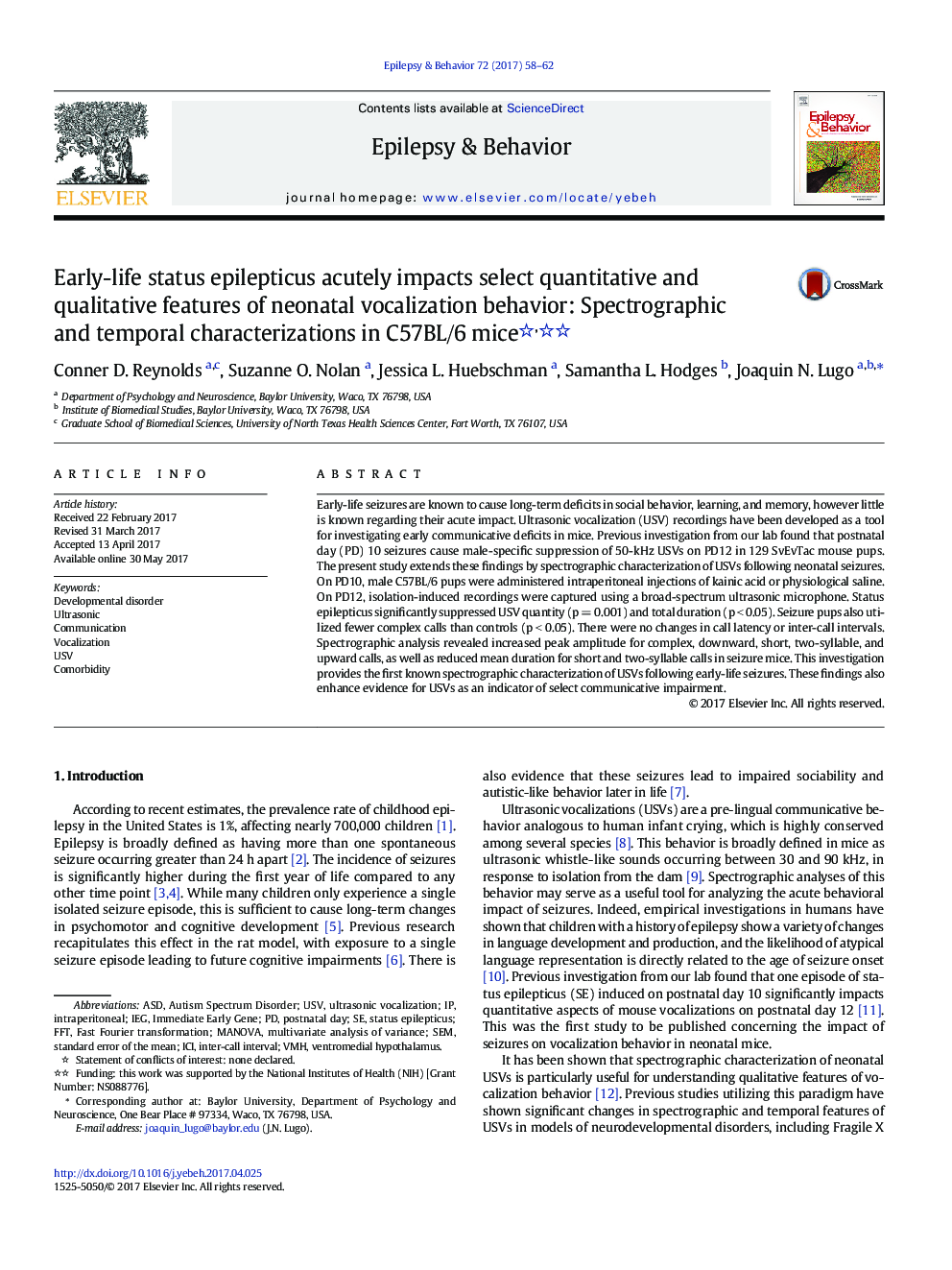| Article ID | Journal | Published Year | Pages | File Type |
|---|---|---|---|---|
| 5628242 | Epilepsy & Behavior | 2017 | 5 Pages |
â¢Seizures suppressed quantity and total duration of USVs.â¢Seizures altered the frequency distribution of call types utilized.â¢Seizures increased peak amplitude for five call types.â¢Seizures reduced mean call duration for short and two-syllable calls.â¢There were no changes in latency to first vocalization or inter-call intervals.
Early-life seizures are known to cause long-term deficits in social behavior, learning, and memory, however little is known regarding their acute impact. Ultrasonic vocalization (USV) recordings have been developed as a tool for investigating early communicative deficits in mice. Previous investigation from our lab found that postnatal day (PD) 10 seizures cause male-specific suppression of 50-kHz USVs on PD12 in 129 SvEvTac mouse pups. The present study extends these findings by spectrographic characterization of USVs following neonatal seizures.On PD10, male C57BL/6 pups were administered intraperitoneal injections of kainic acid or physiological saline. On PD12, isolation-induced recordings were captured using a broad-spectrum ultrasonic microphone. Status epilepticus significantly suppressed USV quantity (p = 0.001) and total duration (p < 0.05). Seizure pups also utilized fewer complex calls than controls (p < 0.05). There were no changes in call latency or inter-call intervals. Spectrographic analysis revealed increased peak amplitude for complex, downward, short, two-syllable, and upward calls, as well as reduced mean duration for short and two-syllable calls in seizure mice. This investigation provides the first known spectrographic characterization of USVs following early-life seizures. These findings also enhance evidence for USVs as an indicator of select communicative impairment.
Graphical abstractDownload high-res image (171KB)Download full-size image
